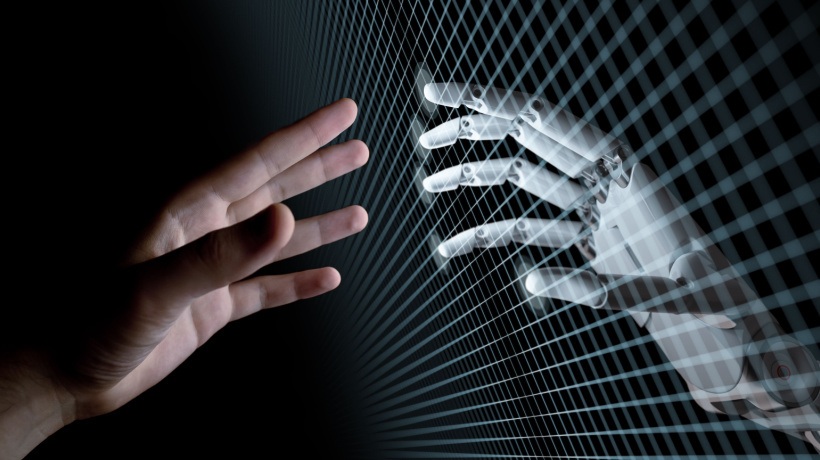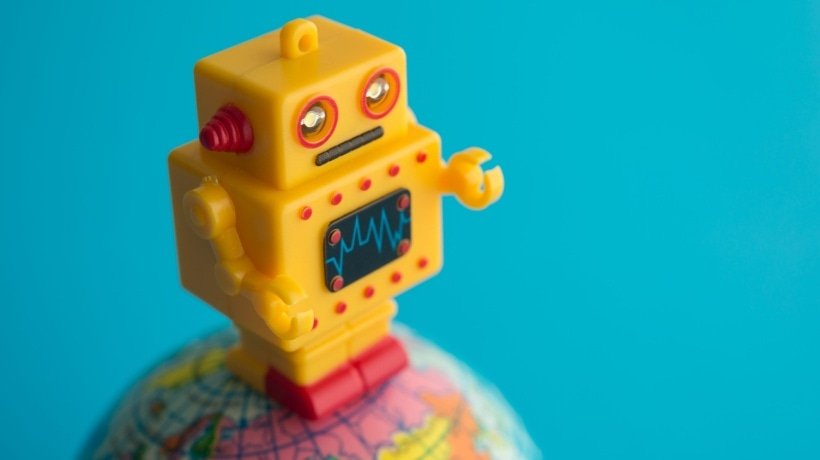AI: History And Future Perspectives
Steve Jobs likened computers to a "bicycle for our minds": a tool that can dramatically amplify our natural abilities (Markoff, 2011). Extending this powerful metaphor, could we then consider Artificial Intelligence (AI) as the "jet engine" for our minds, propelling us beyond the constraints of our cognitive capacity?
In this series of articles, we will explore the synergy between man and machine, revealing how this partnership can unlock extraordinary potential for Learning and Development (L&D). So, join us as we delve into the evolving role of L&D in this era of AI, and examine the prospect of competency development and augmented human capabilities. Welcome to a future of L&D that's more exciting than you could ever imagine.
The Dawn Of AI: Peddling The First Bicycle
Thinking about AI to augment human capabilities harkens back to the mid-twentieth century, when visionaries such as McCarthy et al. (1955) dreamt of machines capable of emulating human intelligence. Imagine the excitement and anticipation of a child receiving their first bicycle, poised on the precipice of newfound freedom and mobility. This was the sentiment echoed in these early years of AI exploration.
The pioneering program ELIZA (1966) is a splendid example of this initial ride. Just as a bicycle enables us to traverse distances unimaginable on foot, ELIZA offered a glimpse into AI's potential in bridging the communication chasm between humans and machines. ELIZA, developed by Joseph Weizenbaum in 1966, is a computer program that emulates a psychotherapist by using pattern matching and substitution methodology to simulate conversation. Despite its simplistic design lacking proper understanding, ELIZA was groundbreaking in demonstrating how human-computer interactions could create an illusion of comprehension and thus served as an early precursor to modern conversational AI.
Similarly, the DENDRAL project (1969) took us further, demonstrating how AI could mirror and augment our problem-solving abilities, much like a sturdy bicycle assisting in conquering steep terrains. The DENDRAL project, initiated by Bruce Buchanan and others in 1969, was one of the first expert systems and a pioneer in the field of Artificial Intelligence, specifically focused on the interpretation of mass spectra in organic chemistry. It used rule-based reasoning and heuristics to predict the possible molecular structures of organic compounds, marking an early and significant step toward AI applications in scientific research.
Augmenting Human Capabilities With AI Today: The Bicycle Becomes A Jet Engine
As we pedal forward in time, AI has transitioned from a simple bicycle to an increasingly sophisticated jet engine. Engelbart's seminal work on "Augmenting Human Intellect" (1962) is reminiscent of a bicycle transforming into an advanced machine. It put forth a framework for using technology to enhance the human mind's problem-solving capacity, thus setting the groundwork for modern computing and information technology. It introduced key concepts such as "collective IQ", hypertext, and the graphical User Interface, and heralded the development of the mouse and other fundamental aspects of interactive computing.
Like a jet engine enabling us to traverse continents and oceans, AI today magnifies our cognitive reach across myriad domains. Consider Google's search algorithms (Singhal, 2012). It's as if you have a supersonic jet at your disposal, zipping you instantly to your desired destination in the vast digital landscape. Or take OpenAI's GPT-4, a linguistic virtuoso, which provides wings to our communication abilities, enabling us to draft eloquent pieces of writing or understand complex texts with ease.
Soaring Into The Future: Jet Engines And Beyond
As we cruise toward the future, AI's trajectory hints at exciting possibilities. We stand at the precipice of a technological leap, where our "AI jet engines" could become "hyperdrives", catapulting us into realms once considered the domain of science fiction.
Brain-computer interfaces (BCIs), like the promising Neuralink project, hint at a future where AI could fuse seamlessly with our brain, creating a high-speed cognitive hyperdrive (Musk and Neuralink, 2019). Picture your thoughts being able to control a device, or access information from the internet instantly. Elon Musk's company, Neuralink, proposed the concept of fusing AI with the human brain to create a "cognitive hyperdrive" in 2019, a revolutionary approach to enhancing human cognition. This notion suggests the development of brain-machine interfaces capable of seamlessly integrating Artificial Intelligence into our neural processing, thereby greatly accelerating our information-processing and decision-making abilities.
Similarly, developments in AI-based prosthetics and exoskeletons (Sarabia-Jácome et al., 2021) suggest a future wherein the limitations sometimes associated with disabilities may be reduced. Imagine an exoskeleton assisting a paraplegic to walk again or a prosthetic hand with the ability to feel and touch. AI-based prosthetics and exoskeletons, as discussed by Sarabia-Jácome and others, utilize Machine Learning and advanced sensor technology to better mimic natural human movement and responsiveness.
Conclusion: Jet Engines, Hyperdrives, And The Human Spirit
Like the transition from bicycles to jet engines, and potentially to hyperdrives, AI's journey in human augmentation has been exhilarating. But as we soar into this exciting future, it's crucial to remember the "pilot" steering these powerful machines—the human spirit. Just as a bicycle is only as good as the cyclist steering it, AI's true potential lies in our hands. Ensuring these "AI jet engines" amplify our capabilities while upholding our human values will be the balancing act of the coming decades.
As we strap into our "AI hyperdrives", we must reflect on the new heights we wish to reach, while also remaining grounded. The principles that guide this journey will define the shape of our shared future. On this fascinating odyssey, as we pedal, soar, and speed toward a future teeming with AI, we'll continually redefine what it means to be human.
Up Next: Unpacking L&D's Role In The AI Era
As we've delved into the transformative potential of AI for L&D, we've merely scratched the surface of what's to come. In the next article, we take you on a deep dive into the evolving role of L&D in competency development and the thrilling prospect of AI augmenting human capabilities. Stay tuned to explore the synergy between man and machine, and the extraordinary potentials it unlocks for Learning and Development. The future of L&D is here, and it's more exciting than you could ever imagine.
As you continue exploring the fascinating world of AI and its potential to revolutionize Learning and Development, we invite you to delve deeper with us. Visit our website Partners in AI for more in-depth information on the insights and opportunities that AI brings to the corporate learning sphere.
This article series titled "Is AI the Bicycle of the Mind?" serves as a prelude to my upcoming book, Value-Based Learning, offering a sneak peek into the insightful content that the book will feature. Please note that all rights to the content in these articles and the upcoming book are reserved. Unauthorized use, reproduction, or distribution of this material without explicit permission is strictly prohibited. For more information and updates about the book, please visit: Value-Based Learning.
References:
- Bostrom, N. 2014. Superintelligence: Paths, Dangers, Strategies. Oxford: Oxford University Press.
- Brynjolfsson, E., and A. McAfee. 2014. The Second Machine Age: Work, Progress, and Prosperity in a Time of Brilliant Technologies. New York/London: W. W. Norton and Company.
- Buchanan, B. G., G. L. Sutherland, and E. A. Feigenbaum. 1969. "Heuristic DENDRAL: A Program for Generating Explanatory Hypotheses in Organic Chemistry." Machine Intelligence, 4: 209-254.
- Engelbart, D. C. 1962. "Augmenting Human Intellect: A Conceptual Framework." Summary Report, AFOSR-3233.
- Esteva, A., A. Robicquet, B. Ramsundar, V. Kuleshov, M. DePristo, K. Chou, and J. Dean. 2019. "A guide to deep learning in healthcare." Nature Medicine, 25: 24–29.
- Markoff, J. 2011. What the Dormouse Said: How the 60s Counterculture Shaped the Personal Computer. New York: Penguin.
- McCarthy, J., M. L. Minsky, N. Rochester, and C. E. Shannon. 1955. "A Proposal for the Dartmouth Summer Research Project on Artificial Intelligence." AI Magazine, 27 (4): 12.
- Musk, E., and Neuralink. 2019. "An Integrated Brain-Machine Interface Platform with Thousands of Channels." Journal of Medical Internet Research, 21 (10): e16194.
- Picard, R. W. 2000. Affective computing. Cambridge, MA: MIT Press.
- Sarabia-Jácome, E., V. I. Marín, M. Bond, and F. Gouverneur. 2021. "State of the Art of Walking Robots: Design, Control, and Applications." Applied Sciences, 11 (9): 3967.
- Singhal, A. 2012. "Introducing the knowledge graph: Things, not strings." Official Google Blog.
- Weizenbaum, J. 1966. "ELIZA - a computer program for the study of natural language communication between man and machine." Communications of the ACM, 9 (1): 36-45.
- Zawacki-Richter, O., V. I. Marín, M. Bond, and F. Gouverneur. 2019. "Systematic review of research on artificial intelligence applications in higher education – where are the educators?" International Journal of Educational Technology in Higher Education, 16, article 39.








